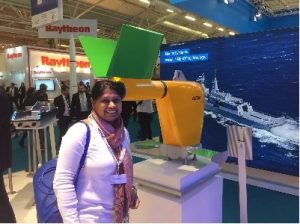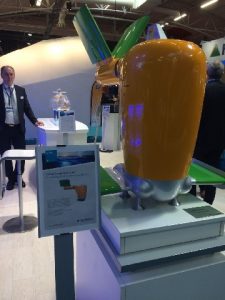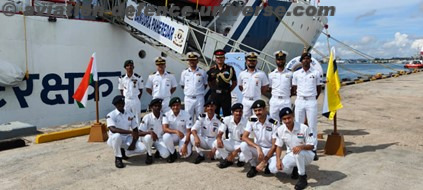 By Chaitali Bag
By Chaitali Bag
Paris. 21 October 2016. For an Indian who follows the procurement track my destination number one after the Indian representations Brahmos and MKU was Atlas Elektronik. It was the curiosity to see what the nation was buying from them.
For the uninitiated it is a reminder that the company and the Indian ministry of defence have signed a contract for the delivery of six active towed array sonar systems (ACTAS) for the Indian Navy. The total contract volume is approximately 40 million Euros. Delivery of the first system was planned for 2016.
The ATLAS ELEKTRONIK Active Towed Array Sonar (ACTAS) is a low-frequency ASW sonar system that operates simultaneously in active and passive modes and provides high-resolution target detection. The detection ranges of ACTAS exceed the weapons range of hostile submarines, thereby denying the enemy an offensive capability. ACTAS provides excellent performance up to very long ranges, which includes over-the-horizon surveillance.
 It is designed to detect, track and classify submarines, torpedoes and surface vessels, including speed boats. ACTAS(Active Towed Array Sonar) belongs to the generation of new and advanced ASW sonar systems, which comply with today’s naval requirements to counter the ASW threat by deploying high-transmission-level low-frequency sonar equipment at variable depth to achieve long-range submarine detection. The Active Towed Array Sonar System ACTAS is designed to support ASW operations against small, silent submarines over long ranges and in difficult sonar environments.
It is designed to detect, track and classify submarines, torpedoes and surface vessels, including speed boats. ACTAS(Active Towed Array Sonar) belongs to the generation of new and advanced ASW sonar systems, which comply with today’s naval requirements to counter the ASW threat by deploying high-transmission-level low-frequency sonar equipment at variable depth to achieve long-range submarine detection. The Active Towed Array Sonar System ACTAS is designed to support ASW operations against small, silent submarines over long ranges and in difficult sonar environments.
The six systems will be fitted to three Talwar-class frigates and three Delhi-class destroyers. As a part of the contract the German company will transfer technology to Bharat Electronics Ltd (BEL) which will build 10 Actas under licence from Atlas. So other class if ships might get lucky too.
Since World War II, sonar has emerged as the primary method of underwater detection of submarines. The most effective type has varied between active and passive, depending on the countermeasures taken by the submarine. Its versatility has increased with the development of air-dropped sonobuoys, which relay sonar signals to overhead aircraft, dipping sonar from helicopters and fixed long range systems.






















































































































